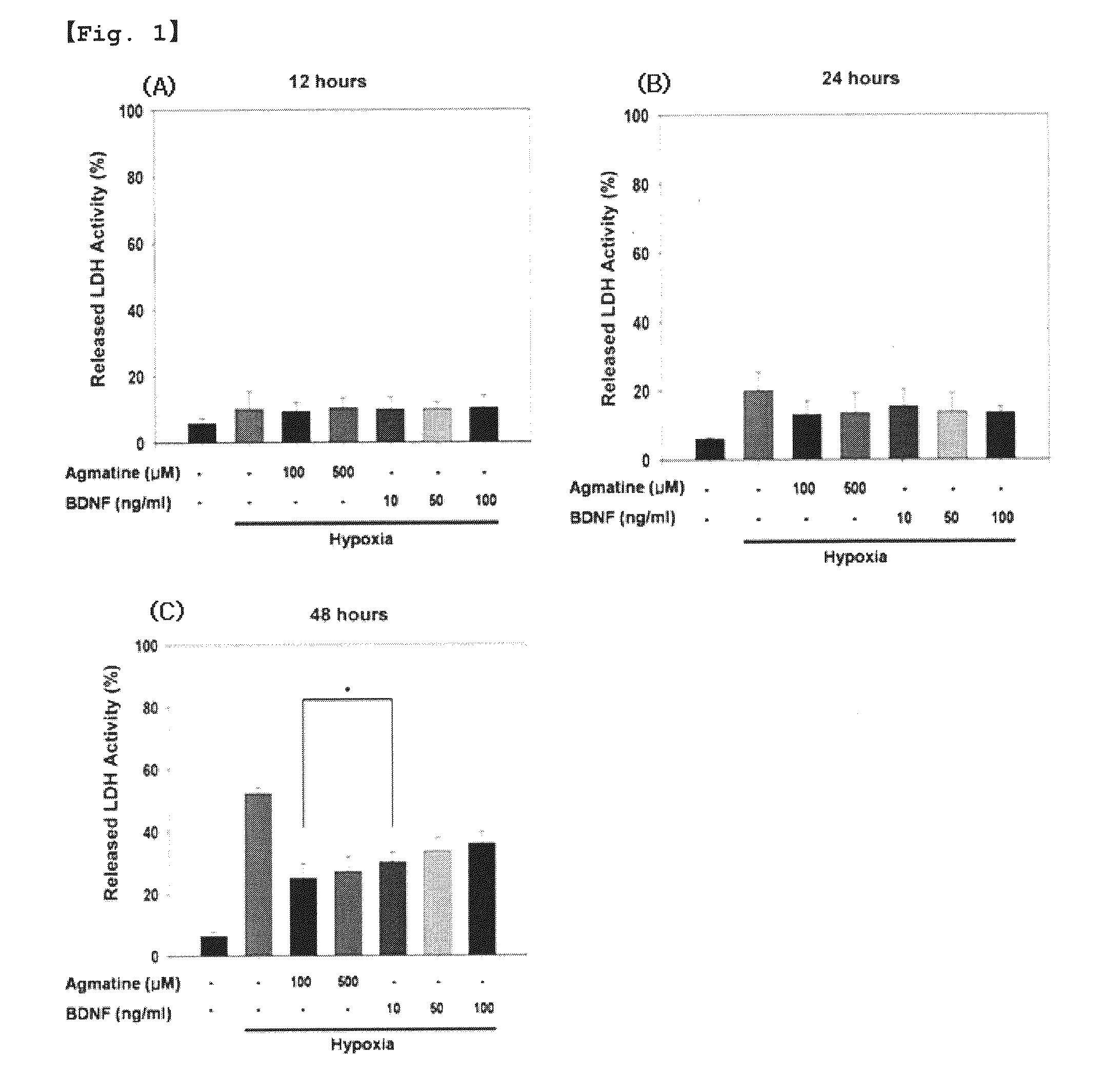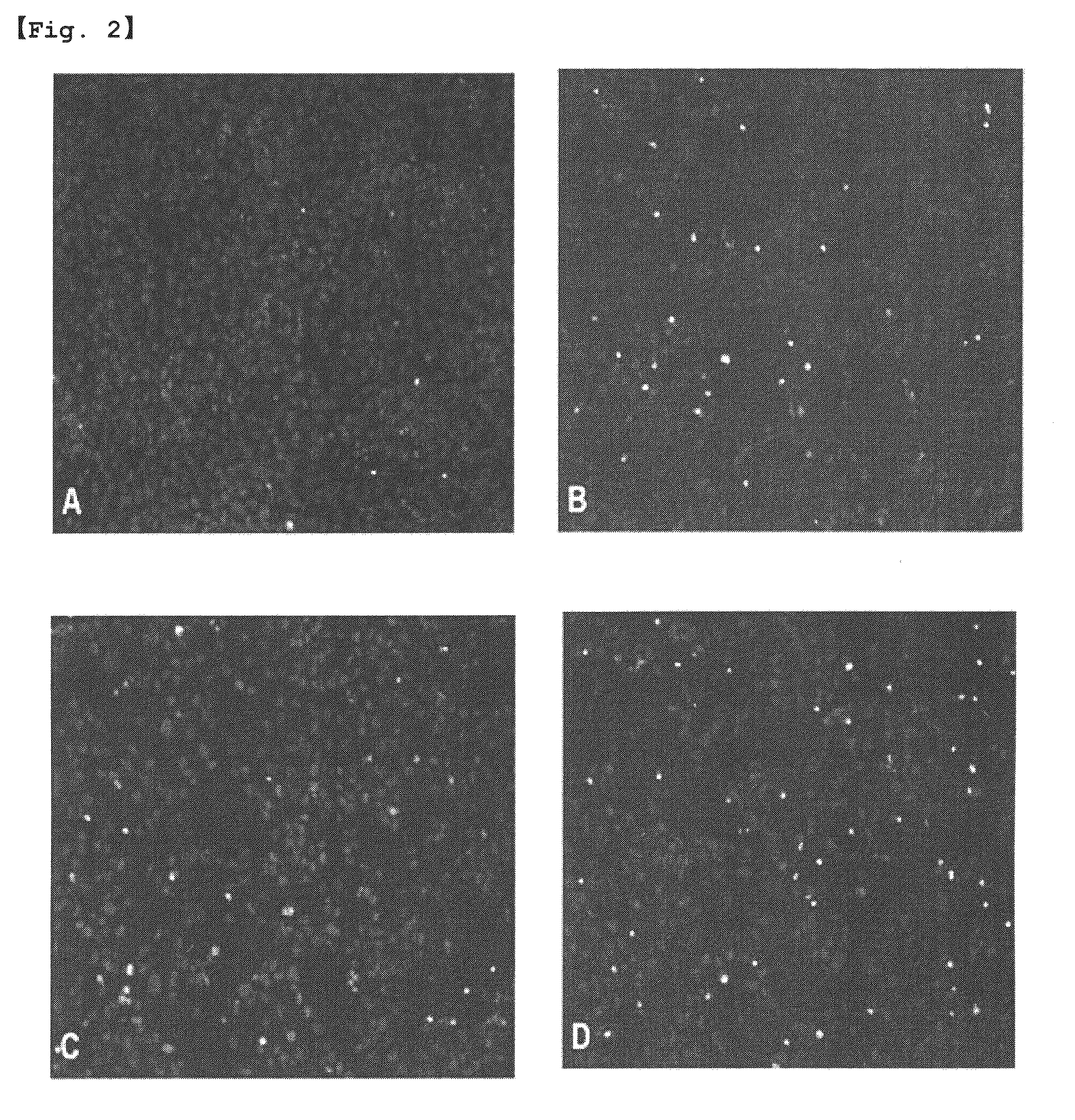Use of agmatine for protection of retinal ganglion cells
a technology of retinal ganglion cells and agmatine, which is applied in the direction of biocide, cardiovascular disorders, drug compositions, etc., can solve the problems of ineffective neuroprotective drugs, apoptosis of rgcs, and inability to develop effective neuroprotective drugs, so as to prevent hypoxia-induced increase in lactate dehydrogenase (ldh) release, suppress the cytotoxic effect of tnf-, cure or prevent eye diseases
- Summary
- Abstract
- Description
- Claims
- Application Information
AI Technical Summary
Benefits of technology
Problems solved by technology
Method used
Image
Examples
example 1
Protective Effect of Agmatine on RGCS from Hypoxia-Induced Apoptosis
[0036]1.1. Chemicals and Antibodies
[0037]Agmatine sulfate (Cat no. A7127) and recombinant human BDNF (Cat no. 248-BD-025) were purchased from Sigma and R&D System, respectively. Rabbit polyclonal anti-JNK p54 / 46 (Cat no. 9252), anti-ERK p44 / 42 (Cat no. 9102), anti-p38 (Cat no. 9212), anti-NF-κB p65 (Cat no. 3034), anti-phospho-JNK p54 / 46 (Cat no. 9251), anti-phospho-ERK p44 / 42 (Cat no. 9101), anti-phospho-p38 (Cat no. 9211), anti-phospho-NF-κB p65 (Cat no. 3031), and anti-histone 3 (Cat no. 9715) antibodies were purchased from Cell Signaling Technology. Mouse monoclonal anti-β-actin antibody (Cat no. sc-47778) was purchased from Santa Cruz Biotechnology, Inc.
[0038]1.2. Cell Culture
[0039]The RGC-5 cell line, which is a RGC line developed from post-natal Sprague-Dawley rats, was grown in modified Dulbecco's Modified Eagle's Medium (DMEM; Gibco) supplemented with 10% of heat inactivated fetal bovine serum (Gibco) and 1...
example 2
Protective Effect of Agmatine on RGCs from TNF-α-Induced Apoptosis
[0075]2.1. RGC-5 Culture and Exposure to TNF-α
[0076]The RGC-5 cell line, which is an RGC line developed from post-natal Sprague-Dawley rats, was grown in modified DMEM (Gibco) supplemented with 10% of heat inactivated fetal bovine serum (Gibco) and 100 U / mL of penicillin and 100 μg / mL of streptomycin (Gibco). The cells were passaged every 2 to 3 days and incubated at 37° C. in 5% of CO2 and air. At cultivation, the cells had the same morphology. For all experiments, cells were used at 80% of confluence.
[0077]After washing twice with PBS, cells were cultured in serum-free DMEM and treated with either 10 or 50 ng / mL of recombinant rat TNF-α (Chemicon) for up to 48 hours. The control cells were not exposed to TNF-α. 100 μM of agmatine was added to the culture medium at the start of injury as indicated.
[0078]2.2. LDH Assay
[0079]Cell viability was quantified by measuring the amounts of LDH released from the injured cells a...
PUM
 Login to View More
Login to View More Abstract
Description
Claims
Application Information
 Login to View More
Login to View More - R&D
- Intellectual Property
- Life Sciences
- Materials
- Tech Scout
- Unparalleled Data Quality
- Higher Quality Content
- 60% Fewer Hallucinations
Browse by: Latest US Patents, China's latest patents, Technical Efficacy Thesaurus, Application Domain, Technology Topic, Popular Technical Reports.
© 2025 PatSnap. All rights reserved.Legal|Privacy policy|Modern Slavery Act Transparency Statement|Sitemap|About US| Contact US: help@patsnap.com



